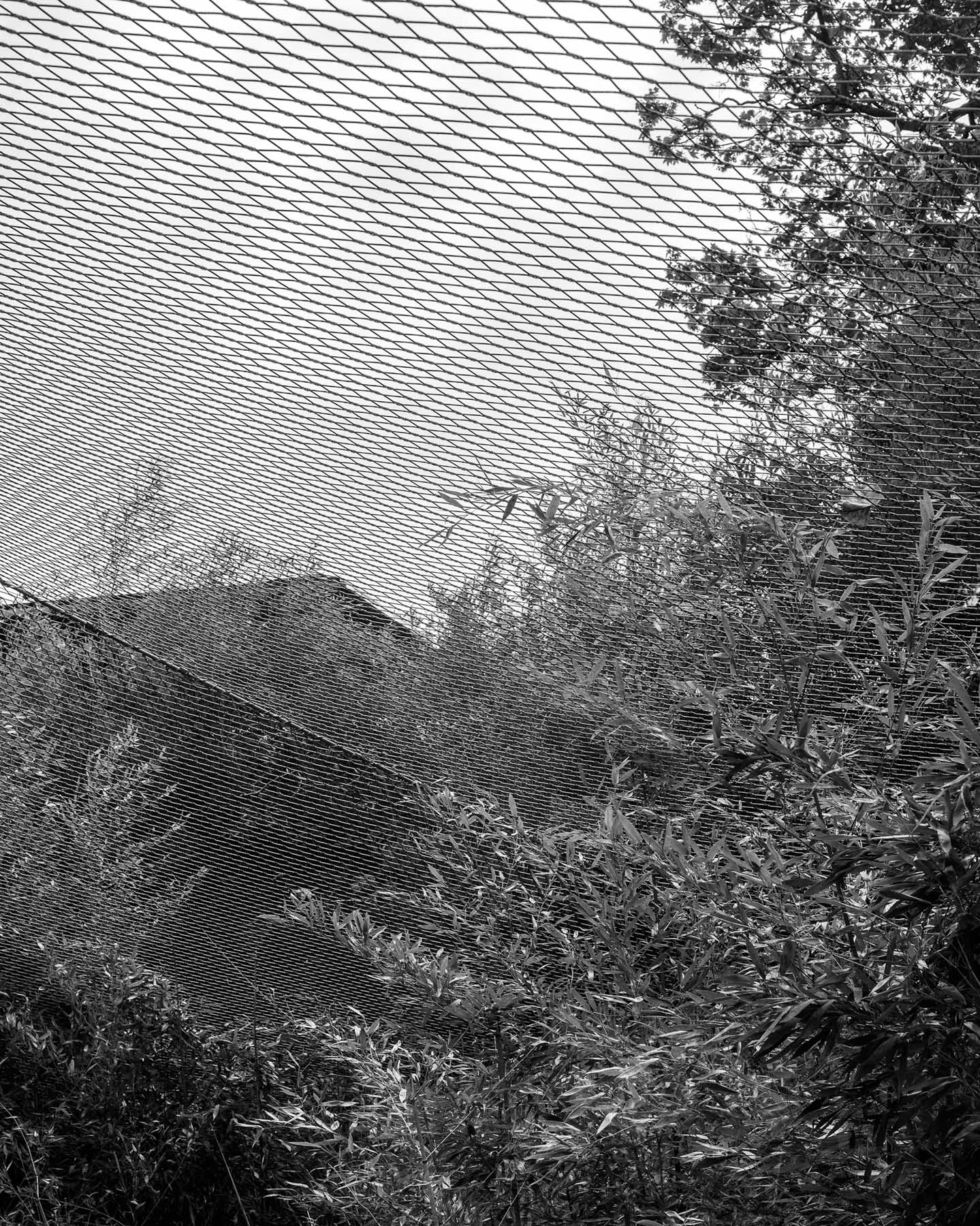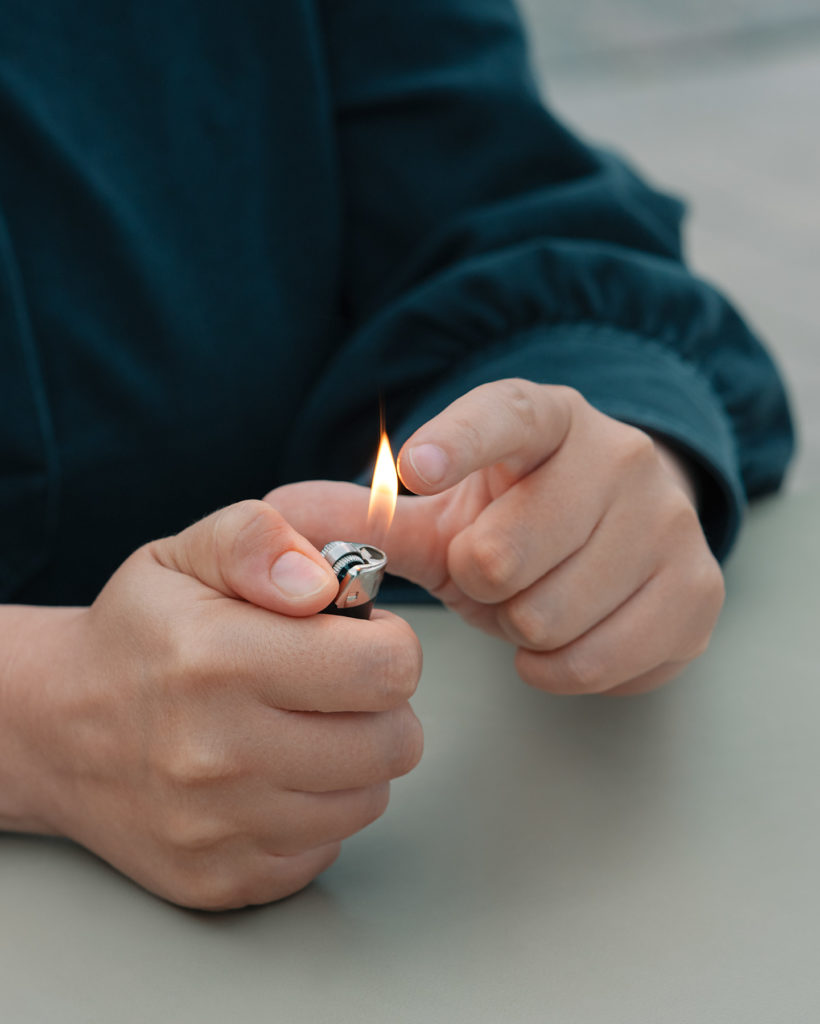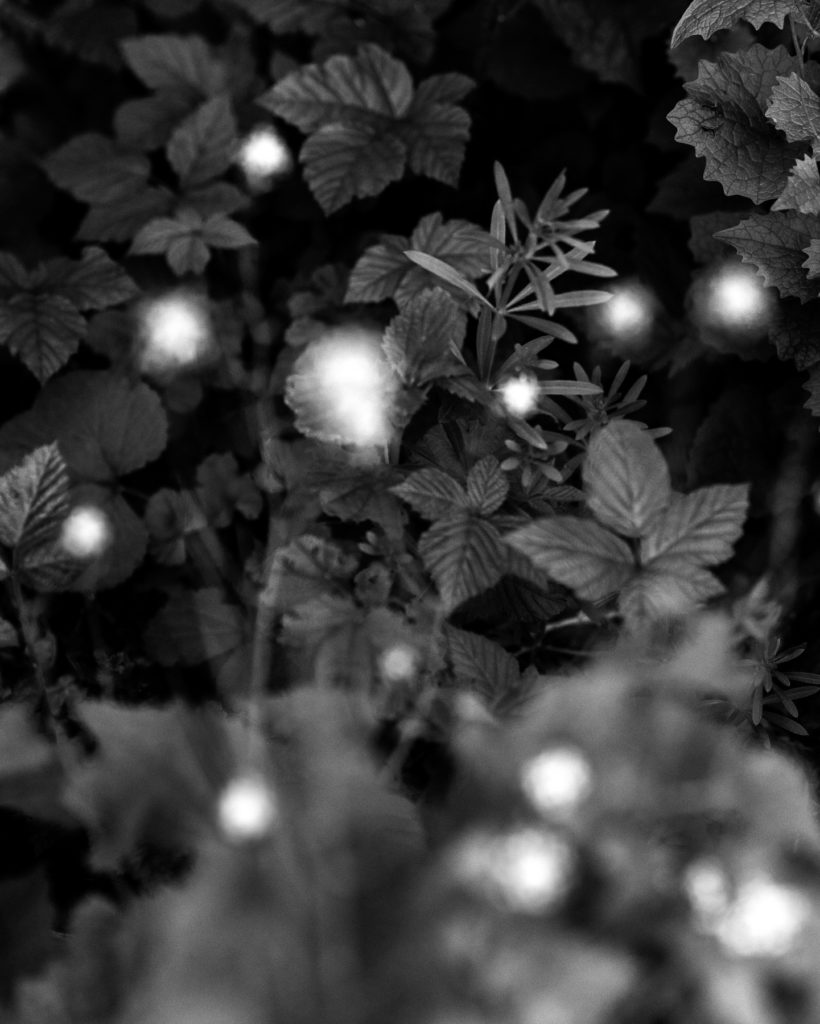Ligia Popławska is a visual artist and photographer currently based in Antwerp, Belgium. She graduated with MFA in Photography from the Royal Academy of Fine Arts Antwerp (2020) and BA in Art History from the University of Gdańsk (2016). Her work focuses on the topics of environmental change and sensory ecology. She researches the parallels between senses, memory and emotional states, in the changing conditions of the (Post) Anthropocene.
It would be very interesting for a start if you could tell us how you started working on this issue which is linked to the relatively new term: Solastalgia that describes a form of emotional or existential distress caused by environmental change.
Solastalgia, climate grief and environmental anxiety are terms we will hear more and more about as climate crisis develops, and so our awareness of it’s scale. All these terms refer to our emotional and mental state of distress specifically influenced by climate change. My research and fascination on Solastalgia and loss of senses started from my own experience of a climate grief. In 2017 a tornado-like storm passed through a hundreds-years old forest situated in Bory Tucholskie, Poland, a very dear place to me, as I was visiting it since childhood. This forest has been incredibly rich in many rare species of birds, animals and fungi. In fifteen minutes forty hectares of this forest have been turned into an apocalyptic landscape. Information about the scale of the disaster not only struck me, I felt a sense of grief for various species which were lost there. Around the same time I also temporarily lost a sense of smell. I’ve become fascinated about the idea of ‘disappearing senses’ and how incredibly fragile yet powerful they are. I’ve begun to wonder and examine on myself – what happens if we lose our senses. But I also saw a deep connection between senses and climate change – after a disaster in Bory Tucholskie there was no sound of birds singing, no smell of moss and mushrooms, no view on the forest. I’ve started the project in the fall of 2019 as a part of my MA in Photography under the mentorship of dr. Geert Goiris. The narrative of the series developed quite intuitively, I’ve searched for links between these two sensations, climate grief and loss of senses, seeking their visual representation. Interesting for me was to know more about how exactly environmental anxiety, climate grief and sensory deprivation influence our perception and brain mechanisms. Climate crisis is one of the biggest challenges of our times on which we need to efficiently work on, but what’s also worrying is a mental health crisis influenced by the climate change. Nearly 70% of younger generation already expresses an anxiety response towards it, and it is perceived by scientists to be one of the biggest mental health problems of the future. I was gathering research on these topics when I came across the term solastalgia. The term was introduced nearly 20 years ago by an environmental philosopher Glenn Albrecht, although it is still pretty unknown today. It describes a sense of a climate grief, a feeling of ‘losing home while being in it’. I found the missing puzzle to the story I wanted to tell. I am now working on continuation of the project with scientists from Belgium and Portugal.
The kind of photography you do doesn’t require a specific place where you shoot, which actually seems quite familiar to me because I like to use it in my practice as well.. How do you prefer to create your images? Are you constantly in a state of observing your surroundings, do you prefer to set up your images or is it a combination of both?
It always depends on the project and how much time I have, of course. I think both in artistic and commercial work as a photographer I always try to plan as much as possible in advance, to establish a framework for myself. But within these boundaries, it’s important to be present in the moment and find the image with my own eyes. I would say it’s definitely a combination of both. For ‘Fading Senses’ I gather a lot of research material. Many of my images originated from writing and drawings, very specific elements, for which I looked for later in my surroundings.
Would you like to tell us about how the narrative unfolds in your work? You evidently have a particular way of doing this by combining colour with black and white images, portraits with close up images and landscapes.
All of the images in this series are interchangeable, so there is not one specific chronology of reading the story. I also like to play with sequencing, which suits exhibition making – creating a different impression in space. Each show presents the series in a bit different sequence, what slightly changes connotation between the images. However, most of the time I start with the portrait of a blind man, Christopher. In this way, whatever we see later, might give an impression of happening inside his mind. But this is not a rule I meticulously stick to. The concept of the visual narrative was influenced by sensory deprivation – where a lack of senses can bring memory flashbacks or even hallucinations. Various images speak of Solastalgia quite literally like Modrzejewo or Ena, showing the brokenness of nature, or transformation of nature into a man-made construct like in Net and Columns. Image Insect presenting an Asian beetle suggest a relocation to an new, odd environment. There are finally images focusing on senses, textures, playing with the sensorial aspect of photography like Flame, Birdview, Laura’s eye.
I saw the self-published booklet you have created for the project which has a lot of theoretical content on the subject. Is it too early to ask if you are considering Fading Senses as a photobook or do you prefer to present it more in venues like festivals and galleries, as we’ve been seeing recently?
I get this question often! It was important for me to introduce the research book with the series, as it establishes a very concrete ground for my more abstract theme. Therefore, the book travels with the exhibition. I would like to publish Fading Senses as a photobook and I am currently looking for a publisher.
Can you give us some info about how Photography is perceived as a medium of art in the place where you live, Belgium?
Photography scene is very interesting to explore here. In Antwerp where I reside, FOMU plays a big role. The Photo Museum not only exhibits an interesting selection of artists and topics, but also provides a rich program of talks and workshops for the public, which establishes a platform for a dialogue. That stimulates a discussion and connects people together. FOMU is also known from .tiff – each year the museum selects 10 emerging talents through a process of nomination (artists from or residing in Belgium) and offers them a wide exposure through .tiff magazine, exhibition, mentoring programme. Since a few years this programme is a part of FUTURES Photography. I was lucky to be selected for this year’s 10th edition. In Brussels or Gent photography scene is all prominent – with interesting exhibitions, bookstores, art residencies and such. What unites these cities together is a strong photography education: Royal Academy of Fine Arts Antwerp, KASK, La Cambre and standing out photographic galleries.
What were the key elements to your photographic education? I don’t just mean photographers and schools—I’m thinking of key life experiences or other forms of art.
A discourse on art was always present at my home, as I’m coming from a family of architects and designers, so a big credit should definitely go to them. Another one I would assign to prof. Jarosław Bauć, a great painter and a dear friend of a family, who’s work deeply fascinated me from a young age. On any occasion he would push my critical thinking by questioning me on my knowledge of contemporary art and history. Since an early age I’ve been interested in film, music, art history, fashion design, fine arts. Actually any discipline, from classical to experimental. Some of the works which I saw life as a teenager still have a big impact on me, like experiencing the exhibition ‘Years of Struggle’ by Wilhelm Sasnal in Zachęta, the immersive installations of Olafur Eliasson in Boijmans Museum, the work of Roni Horn and Sharon Lockhart, films by Bergman, Malle, Kieślowski, Lanthimos, Icelandic music. From an early age I started reading Berger, Sontag, Mitchell, Pallasmaa, Stoichita, Sudjic. I was deeply fascinated by the hidden meanings and construction of images particularly in the history of painting, film and photography. That’s why I first followed art history studies (BA at University of Gdańsk), interested in iconography, de-coding the allegories of Medieval and Renaissance paintings, understanding the visual representation of power through architecture, how the images have shaped our modern and contemporary world, the immersive aspect of installation art, and so on. I was lucky to be a student of great professors, who widely opened my eyes at that time. I also had a pleasure to meet in person Marina Abramović, who’s work deeply influenced my thinking at a particular moment of my life. The interest in iconography, speculative art and methodology of working with research material, which I took from my previous studies, is definitely something I naturally combine in my research-based photographic work now.
Would you like to share with us some recent photobook releases that caught your interest?
From UNSEEN I came back amazed by Caroline Tompkins’s ‘Bedfellow’, freshly published by Palm Studios. Extremely powerful images and a beautiful book. Another great one which came out recently is ‘The Rooted Heart Began To Change’ by Allan Salas, published by Witty Books. This, as far as I know, was published as a result of PhMuseum FOLIO programme. I didn’t have a chance to take into my hands yet, but I am a big fan of Allan’s photography and his touching, sensitive eye.
More on her website
















